What’s your go-to breakfast? Are you a quick bowl of cereal while rushing out the door type of person? Or do you prefer to sit down and enjoy a relaxing breakfast to start your day?
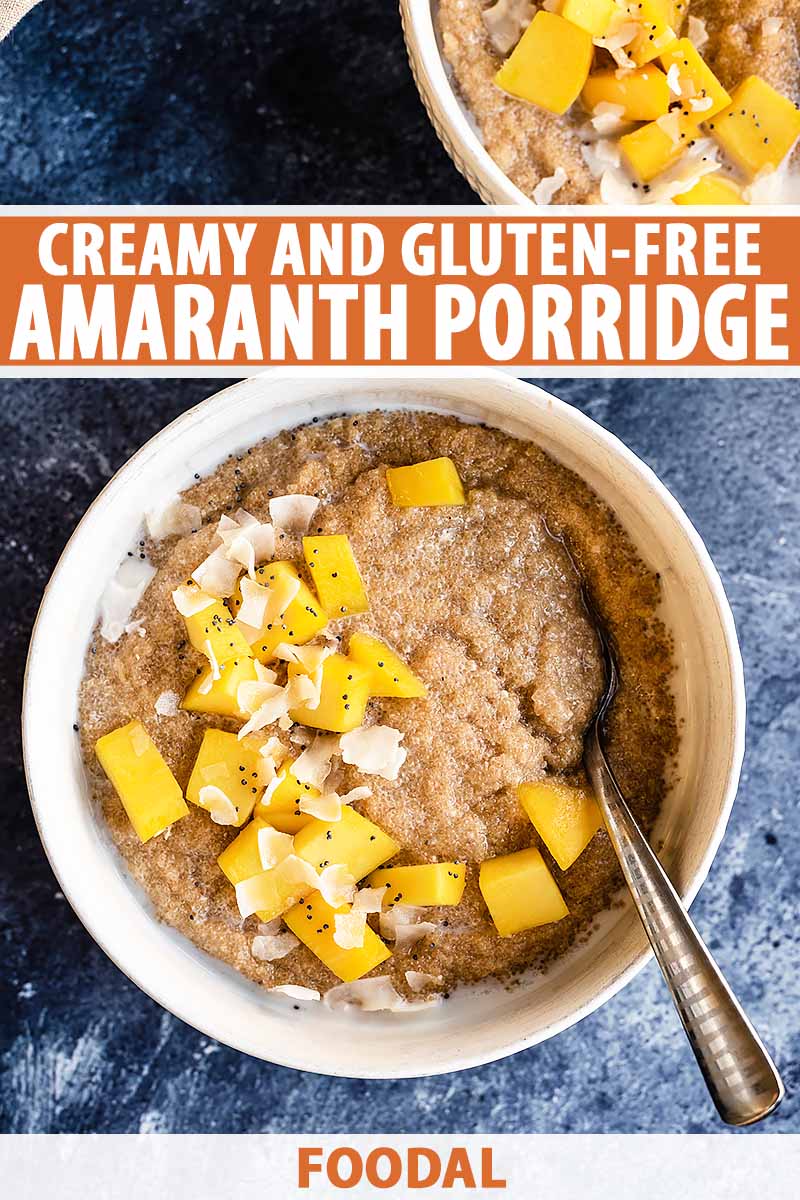
A slow morning is my ideal scenario. These occasions generally begin with a warm bowl of hearty oatmeal – and of course, that much-needed hot cup of coffee!
Fresh from the pot, I still microwave my coffee for some extra heat. Am I the weirdo, or do you do that too?
But as much as I love my morning oatmeal, I’m always open to a little variety.
Have You Tried Amaranth?
Offering an earthy, nutty flavor, it has a texture that’s perfect for porridge. This chewy seed will add some pizzazz to your morning meal with a subtle pop in every bite.
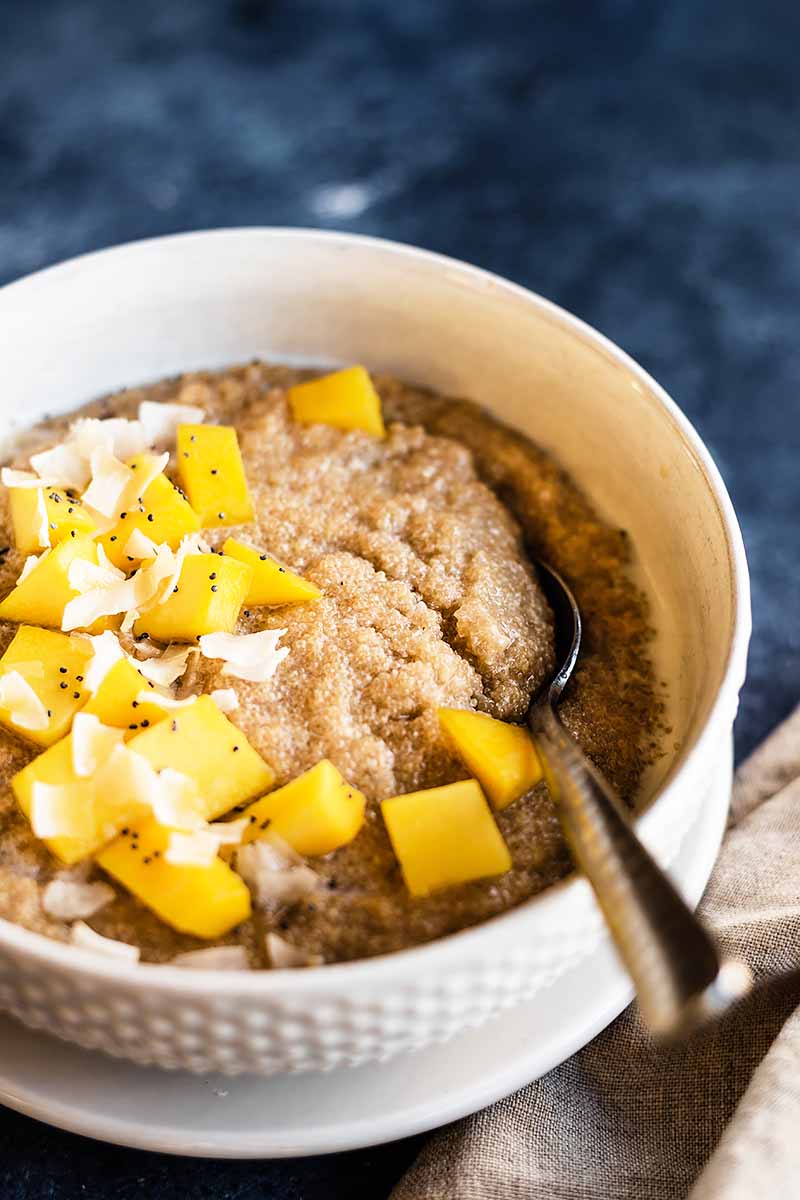
One could be forgiven for mistaking the seeds for a smaller version of quinoa, as they look very similar. But unlike quinoa, it doesn’t fluff up when you cook it.
Instead of fluffing, it releases a lot of starch as it’s cooked, resulting in a gelatinous consistency. And this hearty, high-protein seed makes for a great oatmeal alternative!
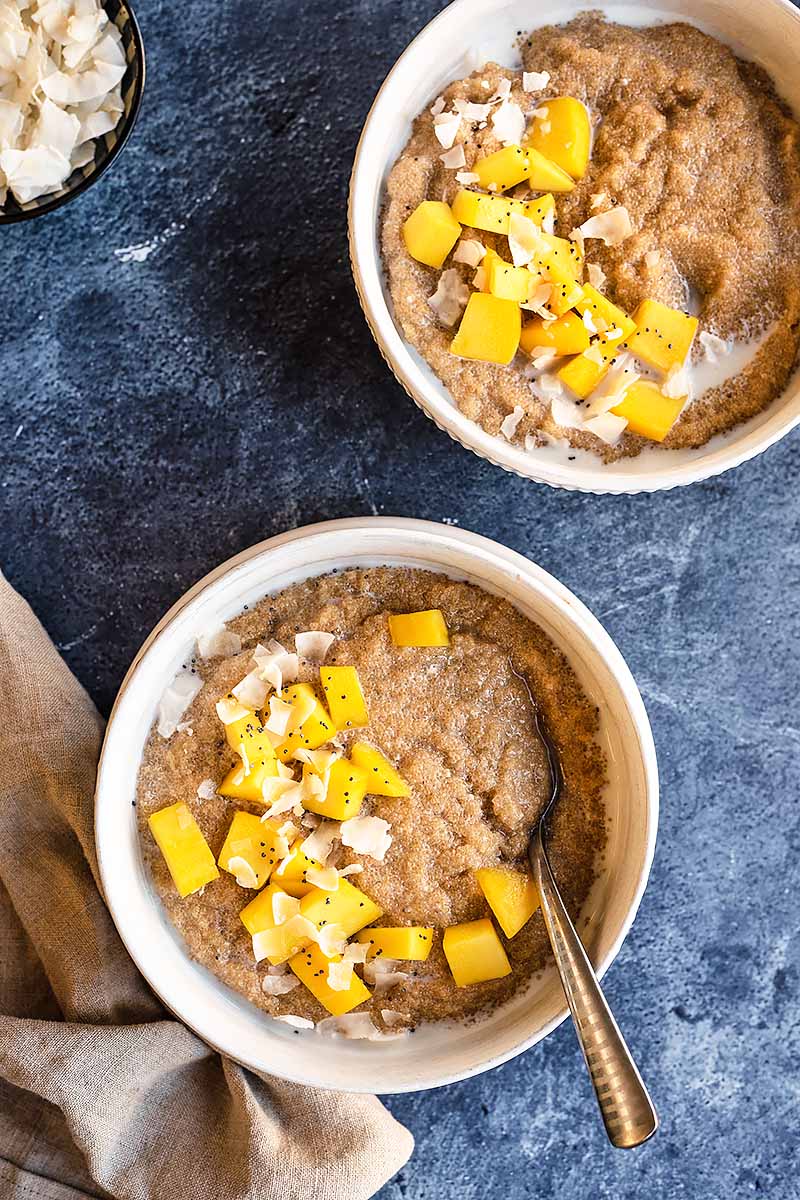
According to the Whole Grains Council, amaranth is the common name for over 60 species of Amaranthus, which are tall, broad-leaved plants grown for their edible seeds and leaves.
Amaranth is technically a pseudocereal, so it’s not exactly a grain, although it does share many similarities.
Considered a native crop of Peru, it was a major food crop of the Aztecs. Used to feed the population, this seed was key to many religious ceremonies.
It grows best at higher elevations, but has an impressive adaptability to thrive in moist, loose soil in temperate climates.

Naturally gluten free, amaranth is a quality food option for people with celiac disease or gluten sensitivity. As Kaufui Wong notes in the Food and Nutrition International Journal, this pseudocereal is rich in protein, high in fiber, and contains valuable micronutrients and antioxidants. More specifically, it is a great source of magnesium, manganese, phosphorus, and iron.
And the benefits don’t stop there! According to a review on amaranth by the Journal of Food Science, this pseudocereal may also help to lower cholesterol and reduce inflammation in the body. Can you believe all these benefits are packed into one simple ingredient?
How to Cook Amaranth
Amaranth is relatively easy to cook, especially when it comes to making a porridge. Simply combine it with your liquid of choice (milk, almond milk, coconut milk, water, etc.) and let it simmer until it’s creamy and dreamy.
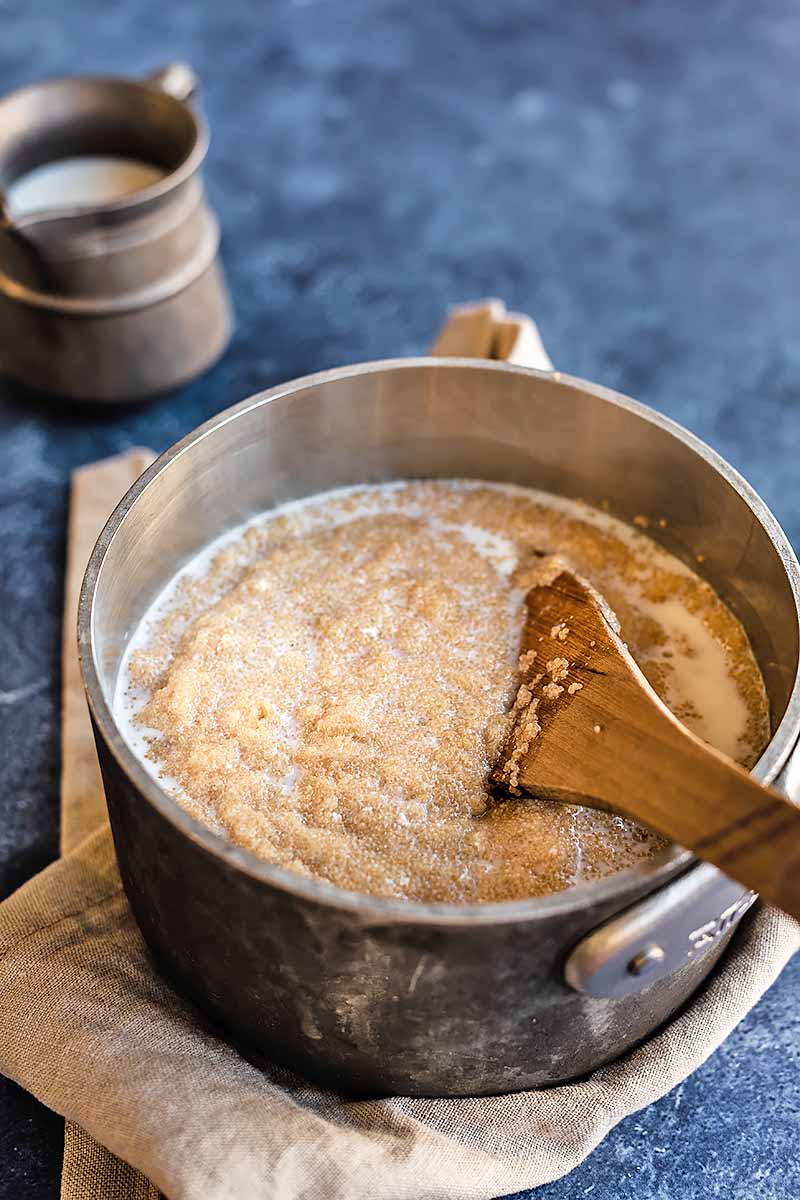
You can also “pop” amaranth. Which just means you toast it in a skillet, and continually shaking until they pop! Then use them on top of salads or soups for an added crunch. Yum.
It can also be used to thicken soups and stews. Usually a tablespoon will do the trick, without leaving your soup too thick.
Is It Time for Breakfast Yet?
This tasty version of porridge is very easy to customize with any (or all!) of your favorite flavors for a delicious breakfast.
For this recipe, I chose one of my favorite combinations – mango, vanilla, and coconut flakes.
I’ve also made this porridge with banana, peanut butter and cinnamon. Or you could try sauteed apples with pecans and maple syrup. There are just so many options!
Print
Creamy Amaranth Porridge
- Total Time: 30-35 minutes
- Yield: 2 servings 1x
Description
Have you ever tried amaranth? This pseudocereal has an earthy, nutty flavor, with a chewy texture that’s perfect for making creamy and delicious porridge
Ingredients
For the Porridge:
- 1 cup organic amaranth seeds
- 2 1/2 cups milk, coconut milk, almond milk, water, or a combination
- 1 tablespoon raw honey or pure maple syrup, plus more as desired
- Pinch of salt
- 1/2–1 teaspoon warming spices (optional)
Optional Add-Ins:
- Extra milk
- Fresh fruit
- Nuts
- Nut butter
- Seeds
- Coconut flakes
- Dried fruit
Instructions
- In a small saucepan, combine amaranth, milk/water, salt, and spices. Bring to a boil, uncovered.
- Cover, reduce heat to simmer, and cook for about 25 minutes, stirring frequently until amaranth is tender and creamy. Remove from heat, sweeten to taste, and serve with desired toppings.
- Prep Time: 5 minutes
- Cook Time: 25-30 minutes
- Category: Porridge
- Method: Stovetop
- Cuisine: Breakfast
Keywords: amaranth, porridge, breakfast, vegan, vegetarian, gluten-free, brunch
Cooking By the Numbers…
Step 1 – Cook
In a small saucepan, combine amaranth, milk or water, salt, and any spices that you would like to add.
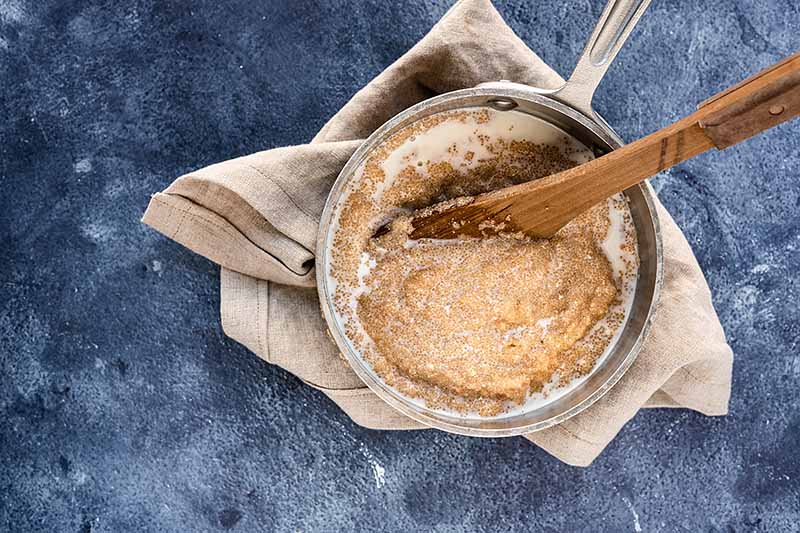
I suggest adding 1/2 teaspoon cinnamon and 1/4 teaspoon nutmeg, or 1/2-1 teaspoon of homemade pumpkin spice.
Bring to a boil, uncovered. Reduce heat to simmer and cover for 25 minutes, stirring frequently. Stirring often will help to prevent it from sticking to the bottom of the saucepan.
After about 15 minutes, check to see if the mixture seems dry. Add more liquid if needed and continue to simmer until the mixture is tender and creamy.
Step 2 – Garnish and Serve
Remove from heat and serve with your favorite toppings, and sweeten as desired.
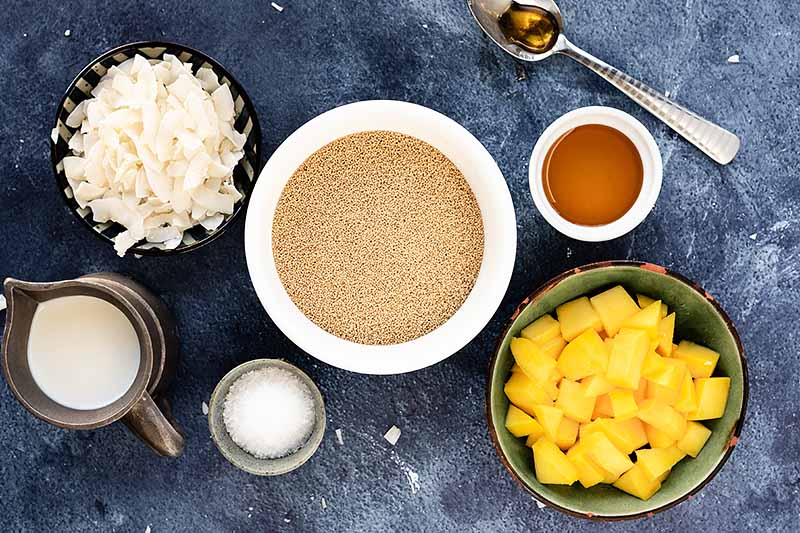
Some of our favorite toppings include: bananas, fresh berries, walnuts or other nuts, nut butter (peanut butter, almond butter), seeds (pumpkin seeds, chia seeds, ground flax seed, sesame seeds, hemp seeds, etc.), coconut flakes, and dried fruit (raisins, dried cranberries, dried apricots, etc.)
Flavor Suggestions
Make this creamy amaranth porridge your own:
- Try it with peanut butter or almond butter with jam.
- Chop up some fresh strawberries to pair with dried coconut and cocoa nibs.
- Toss in blueberries and walnuts to complement a spoonful of your favorite nut butter.
- Add pumpkin seeds, raisins, and a drizzle of maple syrup.
- Pour maple syrup over pecans and sauteed apples.
And there’s more where that came from… Have I mentioned mixing almond butter with figs and pomegranate seeds? Have you tried it with mango, vanilla, and coconut flakes? The possibilities really are endless!
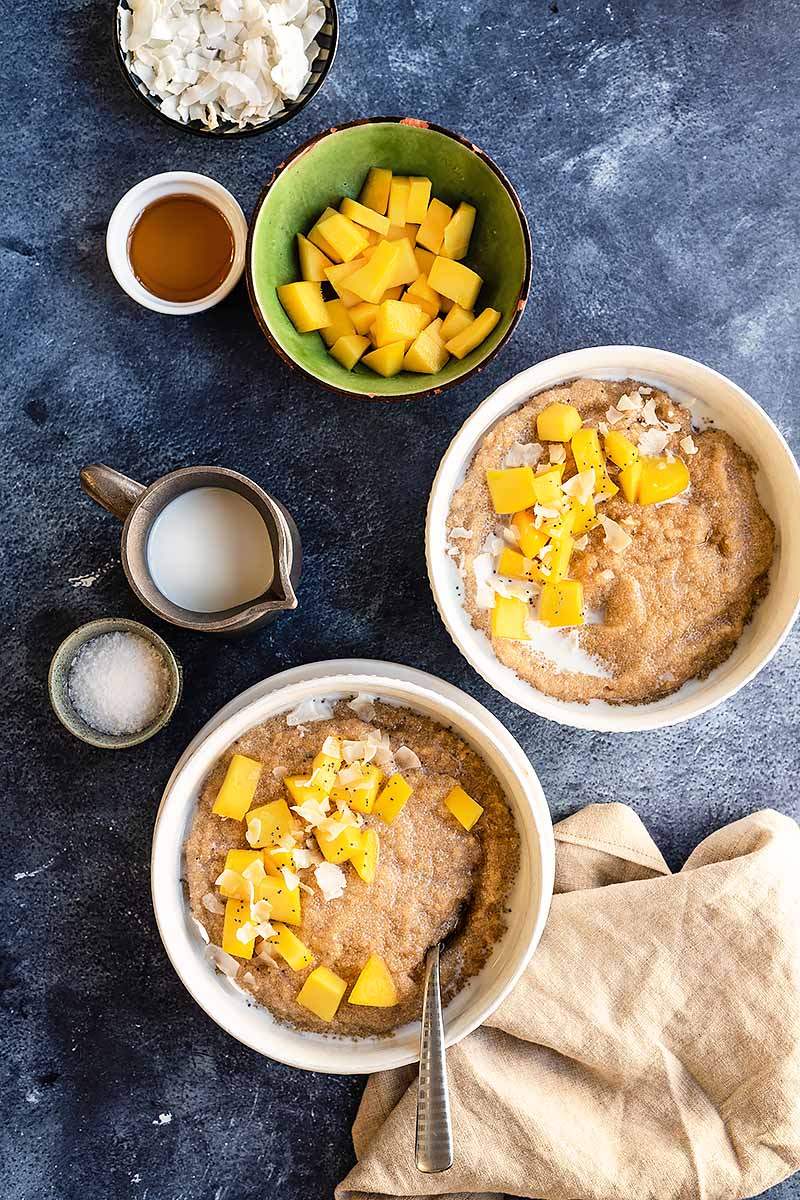
Pro tip: Want to prepare your porridge ahead of time? Make multiple servings and refrigerate for up to 3-4 days. Be aware that the cooking time may increase when multiplying the recipe.
Reheat in the microwave or in a saucepan over medium heat. If your porridge is looking dry, add more liquid, stirring occasionally while reheating until you find your desired consistency.
Change Up Your Breakfast!
So what are you waiting for? This amaranth porridge is just the ticket to change up your breakfast routine with a bowl of fresh flavors.
Learn more about amaranth on Foodal!

Looking for more porridge inspiration? Check our some of our favorites:
- Einkorn Breakfast Porridge
- The Best Quinoa “Oatmeal”
- Slow Cooker Overnight Cranberry Apple Oatmeal
- Breakfast Quinoa with Pumpkin
What are you favorite porridge flavors? Comment below and let us know.
Photos by Libby and Dalton Bloom, © Ask the Experts, LLC. ALL RIGHTS RESERVED. See our TOS for more details. Originally published by Shanna Mallon on March 20, 2012. Last updated: July 13, 2021 at 20:02 pm.
Nutritional information derived from a database of known generic and branded foods and ingredients and was not compiled by a registered dietitian or submitted for lab testing. It should be viewed as an approximation.
The contents of this article have been reviewed and verified by a registered dietitian for informational purposes only. This article should not be construed as personalized or professional medical advice. Foodal and Ask the Experts, LLC assume no liability for the use or misuse of the material presented above. Always consult with a medical professional before changing your diet, or using supplements or manufactured or natural medications.
About Libby and Dalton Bloom
Libby and Dalton Bloom are avid adventurers from the Rocky Mountains of Colorado. Together, they cook, photograph, and write about their passions, from real food to zero waste living. Libby is a dietitian who is in love with vegetables, and she’s always up to something in the kitchen. When he’s not acting as sous-chef, Dalton is the designated taste-tester.





i’ve never heard of amaranth but i’m excited to try something new!
i have a question about the soaking. i typically soak things like lentils & beans, and now this, for about 24 hours, in water. since i am dairy free, i wouldn’t use whey. could i use a splash of lemon juice or something acidic in lieu of it?
Lan, Yes! You could use a splash of lemon juice or something acidic, maybe like apple cider vinegar instead. Good question.
I’ve still yet to cook with amaranth, it looks delicious as a porridge!
Such beautiful photos. I have been reading up on Amaranth alot lately but yet to find it. But I know what I’m doing when I get it!
I will definitely be trying your Amaranth porridge as its own option and as a great Gluten free choice. It is always great to learn about other grains and Amaranth has been one I have never cooked. Thank you for sharing such beautiful pictures and a new recipe!
I’ve made this recipe two times and it’s absolutely delicious! This recipe is and will be my only go to when I make amaranth porridge. I’ve been simmering it with a cinnamon stick and using vegan protein broth for the liquid. Thanks for sharing!
★★★★★
So delicious with banana slices warmed in the porridge toward the end of cooking and honey added at the end.
★★★★★
I didn’t see the the instructions to soak the amaranth, I just bunged everything into my little slow cooker for a few hours. My ” magic porridge pot” made it delicious..even though my amaranth was 10 years out of date! Also put in quinoa, buckwheat flour, grated ginger, chopped dates, half a jar of stewed blackberries, sesame seeds, one spoon of molasses, cinnamon and a banana. Going to portion up the rest and freeze it. Yum yum yum!
★★★★★
Glad you enjoyed it!
Keep in mind that whole grains can spoil, since they contain fats that may go rancid – I assume you probably had yours in the deep freeze to extend the shelf life!
The recipe doesn’t include actual specifics for cooking this special grain. The timing required for simmering is indefinite, undefined in this recipe.
★
Perhaps you didn’t actually read the article, Vee? Did you actually try the recipe? Bringing the mixture to a boil and then simmering for about 25 minutes, as instructed, should bring about the results you’re looking for! As we also explain in the more detailed Cooking by the Numbers section of this article, it’s best to check around the 15-minute mark to make any liquid adjustments as needed. The finished texture of a cooked porridge is up to personal preference, so these times are meant as guidelines to help home cooks attain a creamy texture that’s to their liking.
Please let us know if you have any more specific questions- we’d be happy to help.